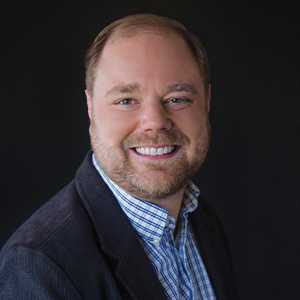Writer: Michael Crumb
Photographer: Duane Tinkey
Ken Peterson said if it weren’t for the angels who are watching out for him, he wouldn’t know how he’d put food on the table.
The 66-year-old Navy veteran is one of more than 5 million Americans who are 60 or older and have only limited or uncertain access to adequate food, according to data from Feeding America. That includes nearly 34,500 Iowans.
Business Publications Corp. and its publications, including the Business Record, dsm magazine and ia magazine, started the Iowa Stops Hunger series in 2020 as more people struggled with food insecurity during the early months of the coronavirus pandemic. The goal was to focus on Iowans who needed help, as well as those who stepped up to provide it.
Now, three years later, food insecurity continues to rise as inflation has pushed food and fuel prices higher. That has created an additional burden for participants in the federal Supplemental Nutrition Assistance Program, whose pandemic-era benefits expired on April 1, 2022.
Peterson, who receives just $28 in monthly SNAP benefits, relies on community meal programs, food pantries and Meals on Wheels to keep his pantry stocked. He is also battling stage 4 prostate cancer, which was first diagnosed in 2008.
But even in the face of these challenges, he still smiles with a twinkle in his eye. “I don’t see a cup half empty,” he said. “I see it as half full.”
He credits his deep religious faith and his friends for keeping him going. He recites the Lord’s Prayer each night before he goes to bed and asks God to ease his burden.
“I say, ‘I leave my problems to you, Lord. Please take the weight off my chest, and in the morning when I wake up, it will be a whole new day, Lord, and it will be pretty cool,’” he said.

Several Sides of Service
Peterson grew up in Boston and after high school joined the Navy, where he served as a sonar technician on submarines from 1976 to 1989. He left to care for one of his brothers, who was ill at the time but has since died. Peterson’s stint in the Navy wasn’t long enough to qualify him for a pension.
He moved to the Midwest around 2009 when the recession hit and jobs on the East Coast dried up. He landed first in Wisconsin but couldn’t find a job, so he moved to Minnesota and tried to get a job with the Veterans Administration but was unsuccessful. The cold winters prompted him and his brother to move to Iowa, where Peterson worked a series of temporary jobs, including one for a company that set up for trade shows. He worked in food service for a while, too.
Around 2014, Peterson eventually stopped working because of his health — he’s struggled with diabetes — and began relying on the generosity of others to help put food on the table.
These days he receives just over $1,100 a month in Social Security benefits, which amounts to about $13,000 a year. He said he used to receive $189 a month in SNAP benefits, but the government determined his income was too high and reduced the monthly benefit to $28.
Now he gets some of his food from the DMARC-Ket Food Pantry at Des Moines Area Religious Council headquarters on Army Post Road. He also receives Meals on Wheels from Wesley Life and visits a local church that serves a daily lunch to those in need.
He relies on friends to drive him to the food pantry and meal program. He also gets rides from the Des Moines Area Regional Transit Authority.
Peterson’s pantry is neatly organized. Canned fruits and vegetables are on one shelf, while peanut butter and boxed items are on another. He keeps other canned goods, like soups, and condiments on another shelf, and Folgers coffee up top. He’s a fan of baked beans and quick rice meals, like broccoli and cheese.
From time to time, Peterson also visits the community meal program at Hope Mission, where he often helps prepare and serve meals to others.
“I’m not a freeloader,” he said. “I [help with meal prep] sometimes to pay back for the meal. That’s how appreciative I was. I go and put gloves on to help serve food to the homeless people.”
Increasing Demand
The people who provide services for Peterson and others say that needs keep increasing, which is straining their resources.

Earlier this year, DMARC’s network of food pantries was setting daily records for the number of people served, a scenario the organization feared would play out when pandemic-era SNAP benefits expired. In April DMARC served more than 19,000 people, marking an increase of more than 35% over the same period in 2022, DMARC officials said.
Many visitors to the network of 15 partner pantries and numerous mobile food pantry locations have been first-time visitors. The record for first-time visitors climbed for at least 12 months straight.
“These are uncharted waters for us,” DMARC CEO Matt Unger said. “What we feared would be happening a year ago is now becoming a reality. Many of the people who are utilizing the DMARC Food Pantry Network right now have never done so before.”
Kathy Coady, who directs development and community relations at Hope Ministries, said the organization served 18% more meals in the first nine months of their most recent fiscal year compared with the same period the previous year. At the same time, she said, the cost to provide those meals jumped 25%.

Hope Ministries provides free meals three times a day at its Hope Cafe at the Bethel Mission Men’s Shelter. The group serves an average of 450 meals a day, Coady said.
Since Hope Ministries serves everyone who shows up, no questions asked, the organization doesn’t know much about users’ individual circumstances. But Coady said it’s likely that most visitors have limited financial resources and struggle with food insecurity. The free meals help supplement other local resources, like the food pantries, which can’t always provide all the food someone might need for a whole month.
“We’re here to be a consistent presence,” she said. “We’re grateful that we can provide [the meal program] for people who need it every day. But for other people, it might be a one-time event. It might be filling in the gaps during a temporary hardship.”
Demand is also increasing for the Wesley Life Meals on Wheels program, said Heather Stuyvesant, who directs the program that serves Polk and parts of Dallas counties. The cost to provide the meals is bumping up, too.

The program currently serves more than 1,000 weekday meals, but that number was expected to double with the expansion of services to Polk County’s 16 senior centers in July. Wesley Life plans to accommodate the growth by moving into a new facility, in the building that used to house Drake University’s education classes on University Avenue.
“That space is going to allow us to triple our meal capacity to meet the needs of our community,” Stuyvesant said.
Meals on Wheels serves older Iowans, particularly those in financial need or people who are socially isolated because of illness or disability. The meals are designed to fulfill a third of the daily nutritional requirements the state sets for people 60 and older. Participants can choose from two hot meal options or a deli meal option, plus a pair of side dishes and a serving of fruit, bread and milk.
Some people qualify for more than one meal a day, if their Medicaid plan pays for it, but most receive just one meal a day. Weekend options are available, too, but those are privately paid.
Stuyvesant said the number of meal requests started ticking up after the emergency SNAP benefits expired. Today, Meals on Wheels is serving nearly 5,000 meals a week. Last year during the same period, the program was serving just over 3,900 meals a week.
“We just continue to get phone calls every day,” she said. “We are just seeing more and more of a need.”
Older adults living in poverty are twice as likely to have challenges living independently, according to a 2020 study from Meals on Wheels America that Stuyvesant shared. Currently, 80% of adults who receive Meals on Wheels live at incomes below 185% of the federal poverty level. Many have illnesses or disabilities that make rising out of poverty unlikely, she said.
“Our clients live on fixed incomes,” she said. “With the rise of inflation and reductions in SNAP benefits, many individuals are forced to make difficult decisions on where to direct their limited income.”
Meals on Wheels receives funding from the Older Iowans Act, which provides $3.60 for a meal and is administered by the county. But the cost of preparing and delivering each meal is $8.70, which has caused a growing funding gap. “It’s getting harder and harder for us to balance our budget every year,” Stuyvesant said.
The ‘Angels’
Peterson said if people are struggling, they should keep their spirits up because there are angels watching who can provide help, “people who, because of their family upbringing, decide to help those in need.”
“That’s who I consider angels,” he said, “those who are helping others in need.”
He said more needs to be done to fund the programs that provide services and help feed people. While he supports a tighter system of checks and balances to hold recipients accountable, he said restrictions shouldn’t be so tight that people who truly need help can’t get it.
“If you’re able to work, you should be working. But if you have a disability, you should be entitled to get assistance,” he said. “If you have kids, you should be entitled to feed the kids. I don’t want to see kids go without food.”








